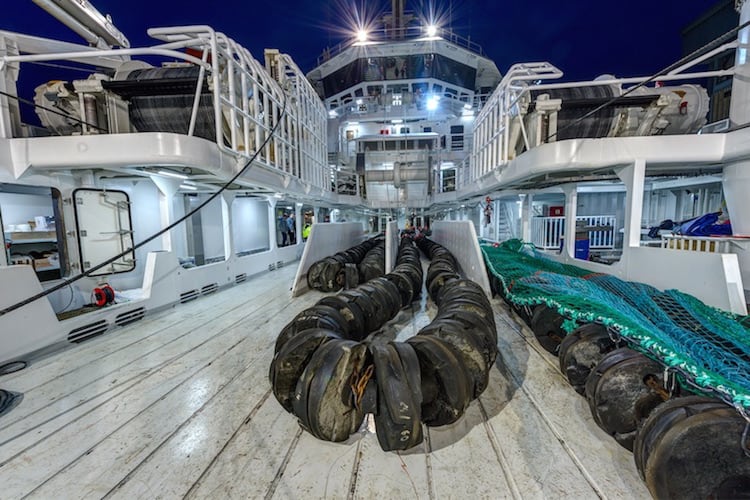Ålesund in western Norway is the centre of much of Norway’s vessel design and shipbuilding, as well as being home to fishing operators and a great many industry supply companies – including Rolls-Royce, which has designed more than a hundred and fifty fishing vessel over the years.
‘Fishing vessels are very tech intensive, and that’s not an understatement,’ said Einar Vegsund, who leads the company’s fishing vessel design team. ‘There is a huge amount of equipment and a great many systems that have to be incorporated into these vessels that are required to be working 330 to 340 days every year.’
He added in an interview with Hook and Net that what drives much of the processes is the design team’s proximity to the industry itself.
‘The vessel owners are really active. The bring us ideas all the time and we test them to see what the results are, so it’s a very interesting group of customers to work with, plus there are very dedicated skippers, mates and chief engineers who contribute to those ideas.’
At present Rolls-Royce has a solid orderbook of fishing vessels for owners in Canada, France, Spain, Germany and Iceland, as well as Norwegian owners, with the new Holmøy now in its third trip after being delivered earlier this year by the Freire yard in Vigo, and the Ramoen about to be delivered by the Armon yard at Gijon. There are a total of sixteen vessels in development today, including the increasingly sophisticated latest generation of live fish carriers.
‘We’re very close to the fishing sector. There’s contact every day, and that’s what drives innovation,’ he said, adding that today’s integrated systems and computer fluid design have opened up significant possibilities and what would once have taken weeks can sometimes be done in as little as half an hour.
Innovations that have gone into the latest wave of newbuildings include the new Bergen 3:45 engine and increasingly sophisticated propulsion packages, plus the Rolls-Royce Wave Piercing technology that has come from extensive research and development into refining hull forms, and the company’s new permanent magnet winches that are on board the new Holmøy.
He said that the arrival of frequency converters has allowed main engines to run at much lower speeds than before when a vessel is operating on light duties, while still delivering electrical power to the the ship’s switchboard.
‘It’s when the propeller’s revolutions can be dropped from 140 to 80 that you see big fuel savings, and there are savings made since the 1990s that are easily documented to be around 5-10%,’ he said, estimating that these savings can be significantly higher.
‘The first of the Bergen 33:45 diesels is out there now and we have six or seven more of these on the way. It’s a very flexible engine, designed to operate at low loads with low fuel consumption when required with the engine revolutions reduced from 750 to 450rpm, but still capable of producing high power when that’s what the skipper needs.’
The full interview is in Hook and Net





